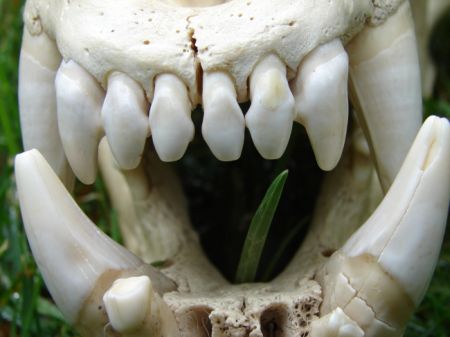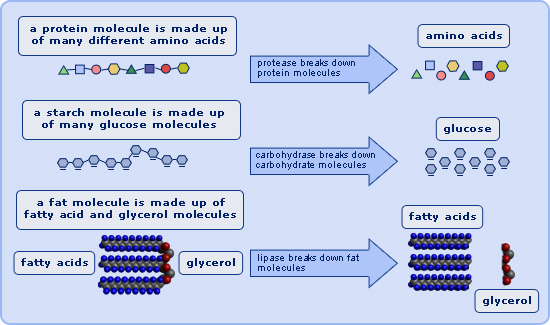
Photo Source
This week we started the study of how organisms obtain their nutrients by looking at the mammalian digestive system. We discussed the comparison between carnivores and herbivores in terms of their skeletal structure, teeth and alimentary canal. Scientists can determine the diet of long-dead organisms by looking at their teeth. The relative size and structure of incisors, canine and molar teeth will indicate whether an organism is better adapted to a diet of meat or plant materials. Here is an interesting article about the study of teeth and diet in ancient humans.
This Friday we will complete Activity 5.5 “Different digestive systems in mammals” (page 45) which will enable you to predict certain features of the digestive system of a mammal, if you are provided with information about it’s diet and body size. You will also be able to interpret diagrams of digestive tracts from different mammals. In general, herbivores have much larger and more complex digestive systems, with fermentation chambers to allow the break down of tough cellulose and fibrous materials. Carnivores have shorter and simpler digestive systems as their diet is more energy-dense and nutrient-rich than food of plant origin. The exception may be honey-eaters, which do not require a complex system for digestion, as their food is already energy dense and in a form easily absorbed into the blood stream.

This diagram shows the important chemical enzymes that aid digestion in mammals. Remember that mechanical digestion does not change the food chemically, it just increases the surface area to volume ratio of the food to allow the enzymes to work better. Bile is actually an emulsifier (like detergents) – it breaks the lipids down into smaller globules to allow the lipases (enzymes that act on fats and oils) to work better. So bile works mechanically rather than chemically – the product is the same chemically as the reactants.




